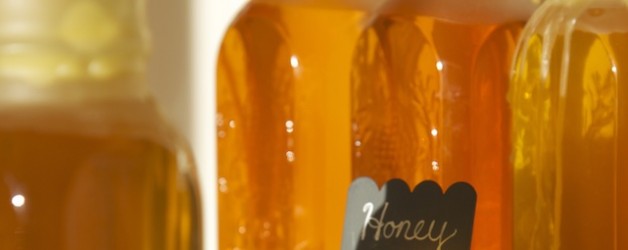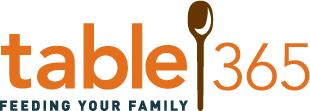

Honey is a table365 pantry basic. Naturally sweet with additional health benefits, pure and local honey is a welcome addition to your weekly family meals. Honey is so versatile that it compliments menus in all seasons but it pairs exceptionally well with the fresh fruits, berries, smoothies, and grilled meats that take center stage in summer meals.
10 Ways to Enjoy Honey
- Drizzle over a yogurt, fruit, and granola parfait.
- Add to smoothies, like mango lassi, for sweetness.
- Mix into oatmeal instead of brown sugar.
- Use in marinades and vinaigrettes.
- Make a glaze for fish, chicken, or pork (recipe below). Or make something like this Martha Stewart recipe for a honey coriander glaze.
- Mix in with Dijon mustard to make a delicious spread for bread to use in appetizers or sandwiches.
- Drizzle over cheese (like Manchego, blue cheese, Brie, or goat) for flavorful variety on a cheese plate.
- Use instead of sugar in baking, like for honey rolls.
- Use infused honeys, such as lemon verbena or lavender infused honey, in tea or baking.
- Make a honey and nut or seed butter sandwich (banana slices optional, but recommended!).
Kimberly’s Fast and Easy Honey Glaze:
- ½ cup chicken broth
- ½ cup balsamic vinegar
- 2 teaspoons honey
- 1 tablespoon butter
Mix chicken broth, balsamic vinegar and honey in pan. Boil and reduce for about 3 minutes. Stir in the butter until melted. Spoon over or brush on grilled fish, chicken, or pork.
Honey Basics:
- The basic mechanics — and we mean basic, since it is really an amazing and complex process! — of how honey gets made: bees collect flower nectar, return it to the honeycomb in a beehive, and through a process of evaporation it turns in to the gorgeous amber liquid we get to enjoy. As bees collect the nectar, they are helping to pollinate plants.
- The flavor and color of honey is dependent on the kinds of flowers the bees are drinking nectar from. The differences in flavor are really interesting and can be best appreciated if you taste different honeys side by side. For example, a fall harvest honey will have subtle, but noticeable, differences in flavor and color from a summer harvest honey. A farmers market, if there is a honey vendor there, is one great place for tastings. Locate local honey producers by asking at your farmers market, or try using Local Harvest’s website to search.
- Raw honey can help boost the body’s immune system and even help build immunities to local allergies if you consume honey from the region where you live. A teaspoon of honey is a natural cough suppressant. You can give a few spoonfuls before bed to children 1+, and it is a soothing addition to hot water with lemon for a cold.
- A reminder about feeding honey to little ones – it should not be given to children under one-year old since their immune systems aren’t strong enough to fight off any bacteria that may be found in honey.
- Helpful tips for baking with honey from the National Honey Board site:
- A 12-ounce jar of honey equals a standard measuring cup.
- To make measuring easier, coat the measuring cup or spoon with a thin film of oil or cooking spray first. (If you consistently use larger amounts of honey for cooking or baking — or other tough-to-measure-and-pour ingredients like peanut butter — consider an adjustable measuring cup that allows you to measure and then push out the ingredients. Any Alton Brown fans will recognize this great kitchen tool.)
- When substituting honey for sugar in baked goods:
- Reduce the liquid in the recipe by 1/4 cup for each cup of honey used.
- Add about 1/2 teaspoon baking soda for each cup of honey used
- Reduce oven temperature by 25 degrees to prevent over-browning.
Honey in Current Events
- Colony Collapse Disorder (CCD): You may have heard about this disease that is wiping out colonies of honey bees at alarming rates in the United States and Europe. The cause of this phenomenon is being studied, but initial research points to pesticides as the cause. The impact is enormous, since bees are vital to pollinating crops all over the U.S. Check out these links for more information:
- Fake Honey Warning:
- There have been several recent articles calling attention to the fact that a significant amount of the honey sold in the United States cannot be classified as honey; most has been adulterated with corn-syrup, as well as ultra-filtered to remove the pollen. The pollen in honey identifies where the honey comes from, but since it is filtered out, the origin of the “honey” cannot be identified. It is suggested that most of this “fake honey” is coming from China. The FDA has restricted the importation of Chinese honey due to its exposure to heavy metals and chemicals. So, make sure your honey is local! Here is more information: http://www.foodsafetynews.com/2011/11/tests-show-most-store-honey-isnt-honey/#.UfsY8xZXC44
Drizzle it on!
